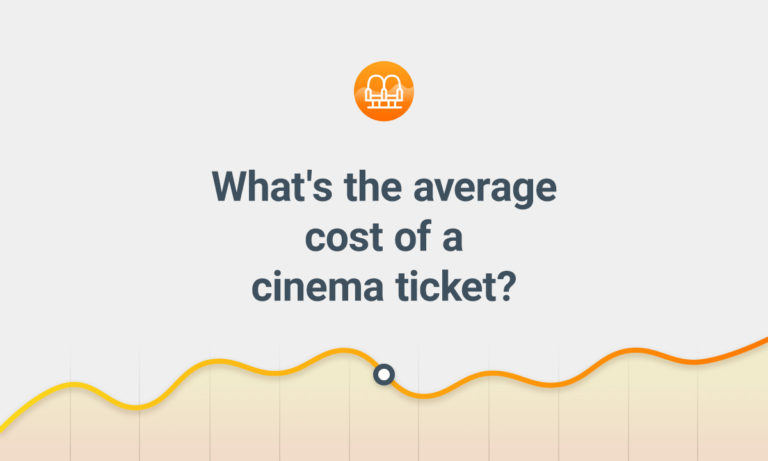 In response to last week’s blog looking at the number of films made in the UK, Jason Attar asked how many of the feature films made in the UK actually reach cinemas. Thanks Jason, good question.
In response to last week’s blog looking at the number of films made in the UK, Jason Attar asked how many of the feature films made in the UK actually reach cinemas. Thanks Jason, good question.
In summary, between 2007 and 2010:
- 35% of UK films are released in UK cinemas within two years of principal photography
- A film’s budget is a strong indicator of how likely it is to get shown in cinemas
- One in five UK films made for under £500,000 reached UK cinemas within two years of being shot
- 70% of UK films with budgets over £5 million are theatrically distributed in the UK
- Just under half of UK films cost under £500,000
- Of the UK films which didn’t receive a theatrical release, 65% were sold on DVD
UK Films With A Theatrical Release
This chart shows how many UK films shot between 2007-2010 were theatrically distributed (i.e. were shown in commercial cinemas to the paying public) within two years of starting principal photography. You can see the figures for theatrical distribution in the UK and the Republic of Ireland and also the figures for international distribution.
Of the 749 UK films made in the UK between 2007 and 2010, 35% were theatrically released in the UK within two years. British films are more likely to reach theatrical distribution in Britain than in any other territory around the world. However, some British films do reach cinemas in foreign territories and not in the UK. If we widen our scope to include films which were theatrically distributed around the world within two years of principal photography, then the headline figure rises to 39%.
Budget Affects the Odds of a Cinema Release
No-one will be surprised to hear that the films with the lowest budget fared the worst; only 22% of films made for under £500,000 reached UK cinemas. The number rises along with the budgets – 33% for films between £500,000 and £2 million, 54% for £2 million to £5 million and 70% for films over £5 million.
This means that the headline figure of 35% of UK films reaching UK theatrical distribution is being pulled down by the large number of lower budget films. 45% of films were made for under £500,000, and of those the median budget was only £200,000.
The numbers don’t reveal why the correlation exists between budget and chances of theatrical release, but factors could include:
- Bigger budget films are creatively better. Higher budgets allow for more experienced cast and crew, who on average will produce better work than those new to the business due to survivorship bias.
- Bigger budget films are more commercial. The types of people and organisations who can provide funding for multi-million pound films are likely to be more commercially savvy and more focused on profit than those involved in micro-budget filmmaking.
- Bigger budget production teams are better-connected. Related to my point above, the financiers and producers of multi-million pound films are more likely to have strong connections in the industry and therefore to be able to get into the right meetings.
- The power of sunk costs. If you have only invested a small amount of money in a film then you will be more willing to cut your losses and walk away than if you had invested £ millions. As Hollywood budgets grow, Studios are increasingly in a situation where every film they make must be pushed theatrically with a marketing budget, as the production budgets are too large to write off.
The Fate of Films Not Theatrically Released?
Theatrical distribution is not the only platform for films to reach the public. Films are sold (DVD and BluRay), broadcast (television, Video on Demand and airlines), streamed (watch online and download) and screened in non-theatrical environments (film festivals, private screenings and film clubs).
Of the UK films which started principal photography between 2007 and 2010 and which were not released theatrically, 65% were sold on video (i.e. VHS, DVD, Blu-ray) and 39% were screened at a film festival.
Due to the way this data was collected, a screening at a very small number of UK cinema screens was not counted as a “theatrical release”. Each organisation will define a “theatrical release” slightly differently. For example, if you want to do a Video On Demand deal with FilmFlex, they require your film to have been screened in at least six screens for at least a week.
Notes On These Figures
These figures come from the UK Film Council, BFI and Rentrak. Tracking low-budget films has always presented a problem for film statisticians as many fall under the radar of industry tools. Before 2008, the UK Film council didn’t even try to follow films made for under £500,000. Consequently, it’s fair to assume that these figures under represent the picture for low/micro budget films.
The first set of figures (percentages of films released) are based on a cutoff of two years after the start of principal photography. Whereas, the second set of figures (what happens to films not theatrically distributed) are based on films which never reached cinemas. Consequently, the two sets of figures don’t match completely.
Over to You
Is there something about the film industry you’ve always wanted to know? Drop me a line and I’ll do my best to look into it and publish the results here for everyone to see.





Comments
Very interesting article. As you say, data on low and micro-budget film can be hard to track so you may be interested in the study which I researched and wrote for the UK Film Council in 2008 which provides an in-depth analysis of the status and performance of micro-budget films and kick-started the regular collection of data by UKFC/BFI. It’s still available via the BFI website http://industry.bfi.org.uk/media/pdf/m/s/Low_and_Micro_Budget_Film_Production_in_the_UK-17Jun08.pdf and provides substantial additional research in the form of data and industry interviews which tends to back up your conclusions.
Hi Stephen,
Thanks for the articles. I was wondering how many films were shot in UK in 2014? And how many of these had main female protagonist?
Thanks,
Luka